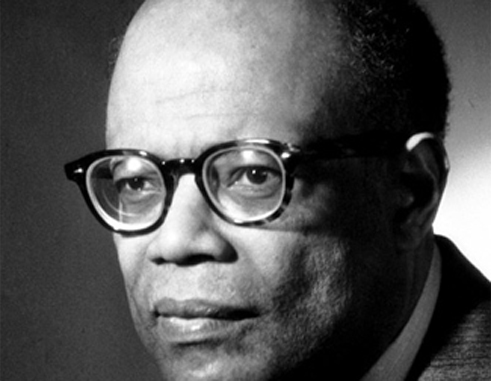WORLD War 2 affected people of all races, creeds and geographical land masses. Its aftermath led to three occurrences which influenced the writings of Sir Arthur. These included decolonization, racial tensions and questions surrounding the role of government. The end of the war spurred debate on what ideological consensuses should be invented to avert a recurrence of war. Consequently issues such as racial justice, political independence, economic growth and the re-distribution of wealth were topical in the mid 1950’s to 1970’s. Sir Arthur sought to contribute to this debate through his writings and musings by using economic theory to provide solutions to these pertinent issues.
“The slowing down of the engine of growth” is the lecture delivered by Sir Arthur at Stockholm in 1979 upon receipt of the Nobel Prize in Economics. Lewis noted that developing country growth rates over history (prior to the 1970’s) appear to have moved in lock step with developed country growth. Post 1970 however there appeared to be a break in this trend which prompted Lewis to examine the proximate causes.
Lewis sought to expound on the transmission mechanism responsible for developing and developed country growth to move in tandem and how it had and may continue to change over time. One of the chief mechanisms responsible for this lockstep movement was in his opinion, trade between the two. As developed countries grow they import more and developing countries export more. This trade, at the time of his writings happened primarily in primary products. Nonetheless it served to bring in much needed foreign reserves, enable a nascent manufacturing base and consequently provided for the platform for a middle class in the developing world. Further to these effects the need for labour by the developed world to convert the imported resources into finished goods provided another channel by which the developing world benefitted from developed country growth, i.e. migration. These new entrants to the developed world would then send remittances back home which greatly assisted capital formation there. Over the review period studied by Lewis these factors positively affected both country groupings and consequently both developed and developing countries grew at around 5.0 per cent annually.
Lewis then focused on whether developed country growth will continue to remain as strong as it did post World War 2 and sought to examine what developing countries should do if this strong rate of growth in developed countries didn’t materialize. Lewis ends the piece by focussing on whether developing countries should pursue a development strategy where they are tied to developed countries via trade. Lewis assumed that growth rates in developed countries would slow in line with cyclical swings in economic activity which occurred every 10 or so years. If developed country growth slowed and developing nations needed to keep their levels of economic activity constant, then in the face of lower demand Lewis argued that increasing intra-developing country trade was the most appropriate response. This intra-developing country trade would supplement any loss of trade associated with weak demand from the developed world, should their growth slow.
Intra developing trade within the context of a slowing developed world growth was the best approach for developing countries to adopt if they wanted to keep robust growth rates. This allowed for continued utilization of capital stock and kept employment levels within the developing world satisfactory. Other approaches such as attempting to get a larger share of developed country imports and lowering their export prices would not have been satisfactory since the former was not possible given Lewis’s assumptions and the later would have resulted in a deterioration of the terms of trade.
He further went on to state that intra developing country trade in food stuffs and basic materials like cement and fertilizer was possible as these required “application of standard/basic technologies” which was within the grasp of most developing countries. Lewis also correctly predicted that developing countries of the days such as Mexico, Singapore and China would have strong intra developing country exports in the first instance and then gradually expand to exporting high value goods to developed markets. While citing potential limits to intra developing country trade such as some developing countries proving too poor to serve as a viable export market while other may become direct competitors he nonetheless stressed that a customs unions operating within a currency clearing system among developing countries was most beneficial.
The link between developed and developing country growth rates with merchandise trade is an intuitively strong one which the region will be well placed to studying. As an example, a review of the percentage of total merchandise imports of the OECD (a grouping of 34 developed states) from the Latin America and the Caribbean region show that regional imports represented on average 4.8 per cent of total OECD imports over the 2001 to 2014 period from 4.1 per cent between 1991 and 2000. The same statistic for the East Asian region however shows that merchandise imports from East Asia to the OECD rose to 13.3% of total OECD imports during the 2001 to 2014 period from an average of 7.5% between 1991 to 2000. East Asia, relative to the Caribbean and Latin American region was able to grow its trade significantly with the developed world and it is not surprising that its growth trajectory has been positive and growing when compared to the Latin America and Caribbean basin. Contributing factors to the relative weakness of regional exports is beyond the scope of this piece but the point that a vibrant export sector is needed remains.
Data on intra-regional CARCIOM is just as instructive as trade statistics reveals that CARCIOM exports to other CARICOM states have increased to $9.4b in 2013 from $3.5b in 2001, but that Trinidad and Tobago accounted for $7.6b of exports in 2013 but only $0.5b of imports in the same year. Should regional growth rates truly improve in line with Lewis’s theory intra-regional trade needs to become more balanced. Saint Lucia data shows that we imported $602.3m from CARICOM but exported $183.2m.
In concluding efforts, by the region to create the OECS Economic Union and strengthen the existing CARICOM protocols are consistent with Lewis’s writing but his pieces stressed that customs unions and the like work best when there are robust public institutions and an entrepreneurial class willing to take risks and develop cross country operations. This approach was advised as it broadens the market for local firms allowing for economies of scale and scope. Furthermore, the resulting transnational corporations may at some point gain sufficient leverage to compete with international firms as well which will redound to the benefit of the developing world.












